Goheal: Why is it said that "board structure" determines the success or failure of a controlling stake acquisi
"If you want to take it, you must first give it; speed is the essence of war, and you must make plans before you act." In the hunting ground of capital, some people hold guns and some people set up traps. And what controls the direction of the situation is often not who has a fatter pocket, but who has a deeper understanding of "people". In the acquisition war of controlling stakes of listed companies, the organization that seems to be "standing behind the scenes" - the board of directors, is often the key to success or failure.
On the battlefield, this is the command system; in the chess game, this is the core of the move. The success or failure of the acquisition, whether it is controlled or not, is ultimately a "power game" between the board seats, voting mechanism, trust alliance and opposition camp.
In Goheal's many years of practical experience in hundreds of controlling stake battles, we are increasingly firm in our judgment: whoever understands the board structure is qualified to take the lead in this game.
American Goheal M&A Group
The acquisition of controlling rights has never been a matter of "who has more money has the final say"
In the eyes of many people, the acquisition of controlling rights is a capital contest, which is about whose consortium is bigger, whose leverage is higher, and whose offer is more attractive. But the real scene is closer to a power drama, similar to "Game of Thrones": Do you think that you can make a final decision by buying 30% of the shares? No, the decision-making power of the script has always been behind the door of the "boardroom".
You will find that many mergers and acquisitions are at the last minute, the agreements are signed, and the shares are received, but they are overturned by the board of directors' "snap" opposition. Some directors are neutral on the surface, but are actually "united" by the management in secret; some independent directors are supposed to represent small and medium shareholders, but they are "as close as brothers" to the controlling party. So, the agreement that was originally intended to determine the country finally turned into an "apology letter".
Goheal once took over a typical case: the shareholder structure of a listed company A was dispersed, and a capital party intended to obtain 20% of the shares and seize control through an agreement transfer. On the surface, this is close to the controlling line; but after the Goheal team intervened in the due diligence, they found that 4 seats on the board of directors were "solidified" by the original controlling party for a long time. Even if more than half of the votes were cast at the shareholders' meeting, the board of directors could still turn the tables. So we decisively adjusted our strategy and finally achieved a closed loop of acquisition by simultaneously promoting voting rights delegation and board reorganization.
The real "head" of the controlling acquisition is often not the shareholders' meeting, but the board of directors.
Sit firmly on the bench and win the acquisition
Why is the board of directors structure so critical? Because under the authority granted to the board of directors by the Company Law and the Articles of Association, many major matters do not require the approval of the shareholders' meeting, but "the board of directors has the final say". Including but not limited to: replacing management, vetoing major asset transfers, vetoing related transactions, and blocking key steps in mergers and acquisitions.
We often say an internal motto at Goheal: "Sit firmly on a stool and win a game of chess." The so-called "stool" is the board seat. In many cases, striving for a change in one seat on the board of directors is far more effective than increasing holdings by 5%.
Especially in the critical stage of the battle for controlling rights, the board of directors is the "BOSS-level NPC" that the acquirer is most afraid of encountering. You can own shares, but you may not have control; you may have a voice, but you may not be able to pass proposals. Especially when corporate governance is unclear, the articles of association have many loopholes, and the independent director mechanism is in name only, this BOSS can even reverse the plot and kick you out.
What's more, some companies have set up "high-level thresholds for the board of directors": for example, 2/3 of the directors need to vote to dismiss the general manager, or require specific matters to be "collectively approved by independent directors." Under this mechanism, even if you are the largest shareholder and do not have a dominant position in the board of directors, you may still be "controlled."
Goheal has summarized a set of "board of directors penetration models" in many years of actual combat: look at the structure, check kinship, check voting, and build friendly forces. These four steps can basically determine whether a target company can be controlled and whether it is worth acquiring.
Independent directors, are they really "independent" or "independent of you"?
Let's talk about some interesting and often overlooked details-independent directors. Do you think they are the "hammer of justice" who speak for small and medium shareholders? However, Goheal's research found that the independence of many independent directors is more theoretical. In reality, they often have various subtle relationships with major shareholders and original management. For example, when a listed company was intended to be acquired by a well-known PE in 2019, three of the five independent directors came from a financial advisory company controlled by the major shareholder, and one was the actual controller's college mentor.
In the end, of course, the acquisition did not succeed, and the objections were all in the name of "independent directors". Here we propose a Goheal-style question thinking: "Who is the real director on your board of directors?" Don't just look at the title, the vote, the team, and whether they dare to vote against at a critical moment. Those who are truly neutral, understand governance, and are willing to be professionally oriented are the key nodes where the acquirer should actively communicate and establish relationships.
In the reorganization of many listed companies that Goheal participated in, the first thing to do was not to spend money to buy shares, but to hold a meeting with the list of independent directors and draw a relationship map one by one-who is reliable? Who is neutral? Who needs "public relations"? Who must be "replaced"? This step is the basis for a smooth acquisition.
Spoilers and paratroopers: Not every board war has a winner
Some mergers and acquisitions fail not because the opponent is too strong, but because "their own people are disobedient." A "paratrooper" came to the board of directors, and you thought he would support you, but he turned out to be an "ambitious person", taking the position himself, demolishing bridges and cutting off food, and locking up positions. This kind of thing is common in the market.
There is also a classic situation: the acquirer tried his best to get the equity ratio and acquisition offer, but ignored that the board of directors was controlled by the "old team", and as a result, all major matters were delayed, shelved or even rejected. You hold the newly purchased shares and watch the original board of directors set limits and boycott cooperation layer by layer, and finally have to stop losses and exit in tears.
This is not alarmist, but a "common problem" found by Goheal in the review of many failed mergers and acquisitions. Successful acquisitions are not just capital tactics, but also the coordinated reshaping of power structures. Whoever can see through people's hearts and deploy ahead of the changes will have the last laugh in this high-IQ game.
From "acquiring equity" to "acquiring people's hearts", Goheal's winning logic
Goheal's long-term acquisition strategy is "from taking shares to taking seats, from occupying seats to changing souls". Acquisition is not a one-shot deal, but part of governance reconstruction.
In a typical case, we formulated a three-stage strategy for the acquirer of a new energy listed company, "first equity, then change directors, and finally control rights". After taking 20% of the equity in the early stage, we first added 1 director and nominated 2 independent directors through the shareholders' meeting; then the independent directors vetoed the original management financing plan, triggering a chain reaction in the market and forcing the original controller to give up management rights. The whole process took 11 months, but it finally successfully achieved the full transfer of controlling rights and doubled the company's market value.
The landing point behind these strategies is not the financial model, not the due diligence report, but the "voting rights" and "voice" at every board meeting. What is controlled is the right to speak, and what is exchanged is the soul of the board of directors.
Epilogue: You think you won the capital, but you actually won the structural design
Today's acquisition battlefield of listed companies is not a simple "1+1=2", but more like "1+structure+culture+people's heart=result". The board of directors is the meeting point of "structure" and "people's heart" in this equation.
Goheal Group
Then the question is: Have you ever been in an acquisition, but you have no control even though you have the shares? Have you ever been disrupted by the "rebellion" of independent directors during the reorganization of the board of directors? Are you also thinking about whether your target company should shift from "holding" to "control" in the next step?
Welcome to leave a message in the comment area and discuss the real tactics of board design, M&A game and governance reconstruction with Goheal. In the battlefield of capital, only those who understand structure are worthy of holding the flag and being the king.
[About Goheal] Goheal is a leading investment holding company focusing on global M&A holdings. It has been deeply involved in the three core business areas of acquisition of listed company control, M&A and restructuring of listed companies, and capital operation of listed companies. With its deep professional strength and rich experience, it provides enterprises with full life cycle services from M&A to restructuring and then to capital operation, aiming to maximize corporate value and achieve long-term benefit growth.


